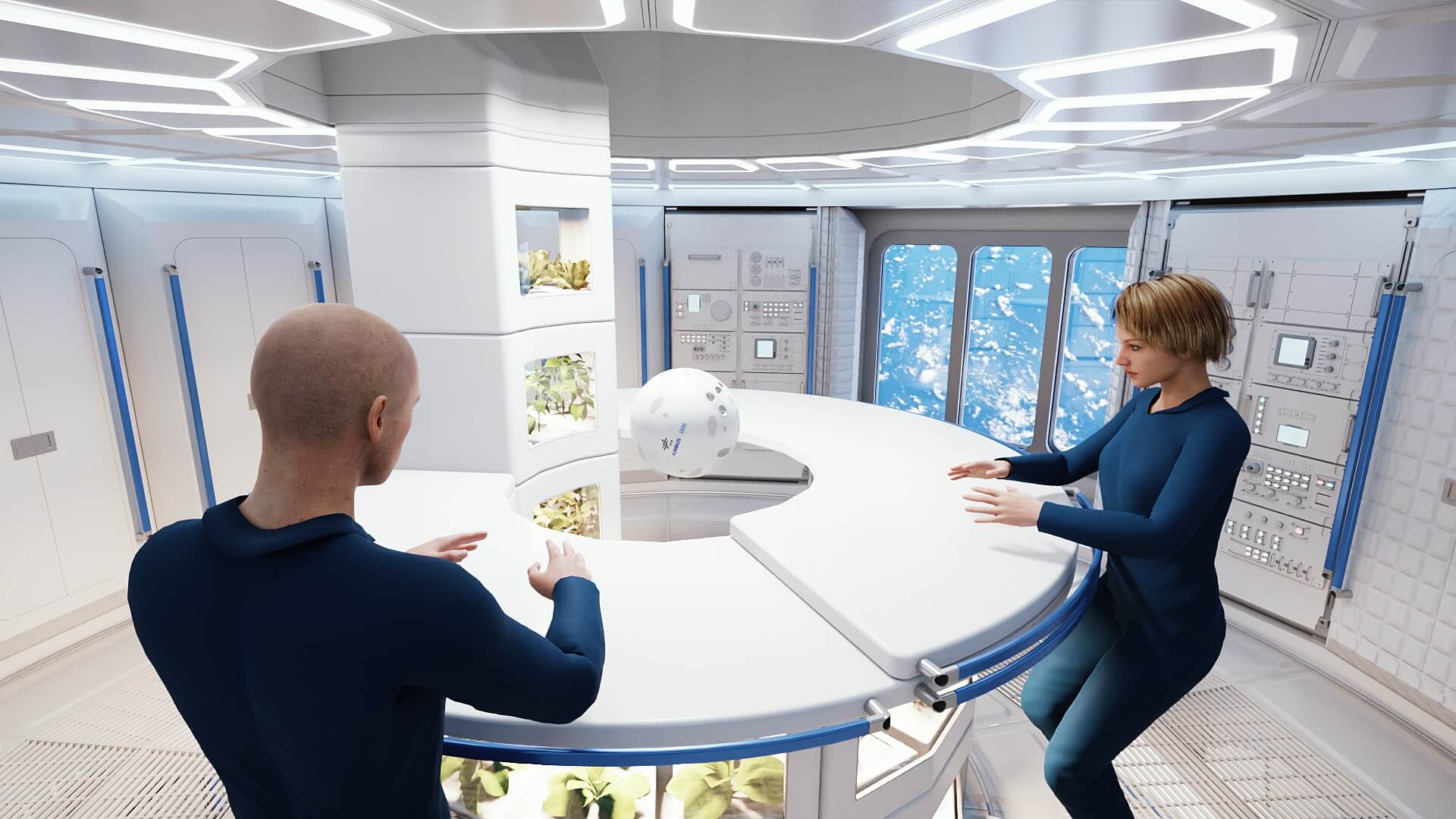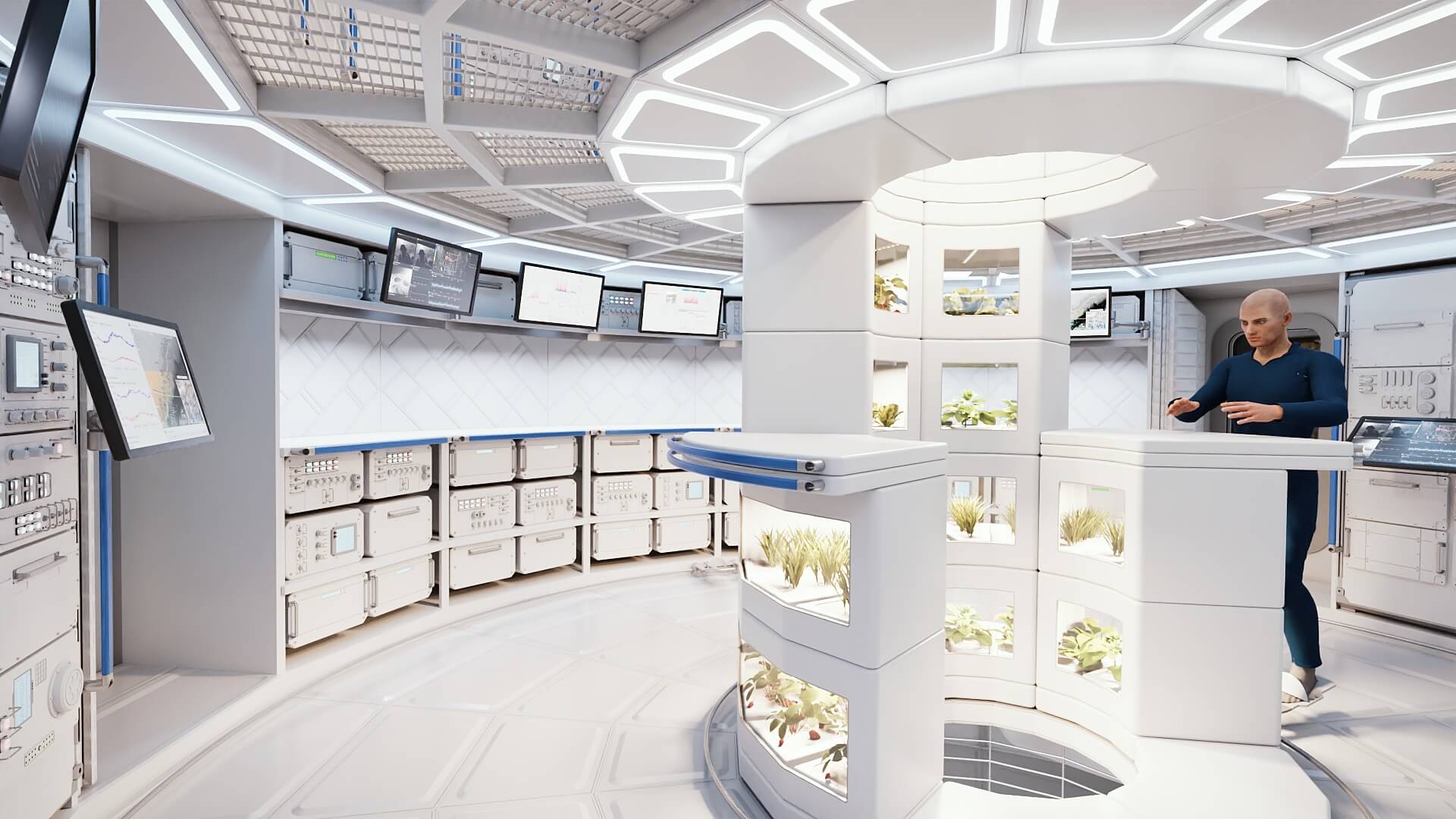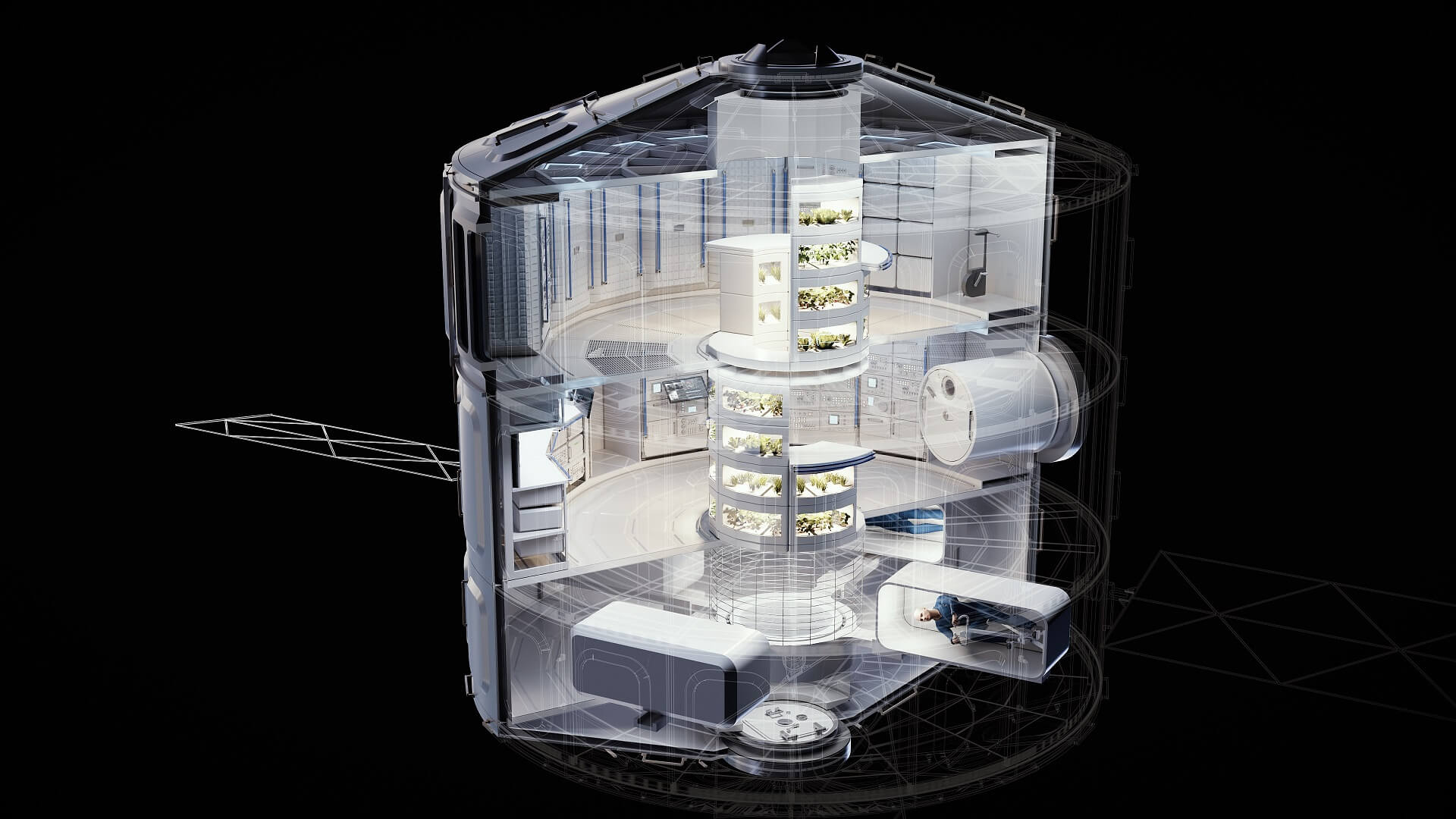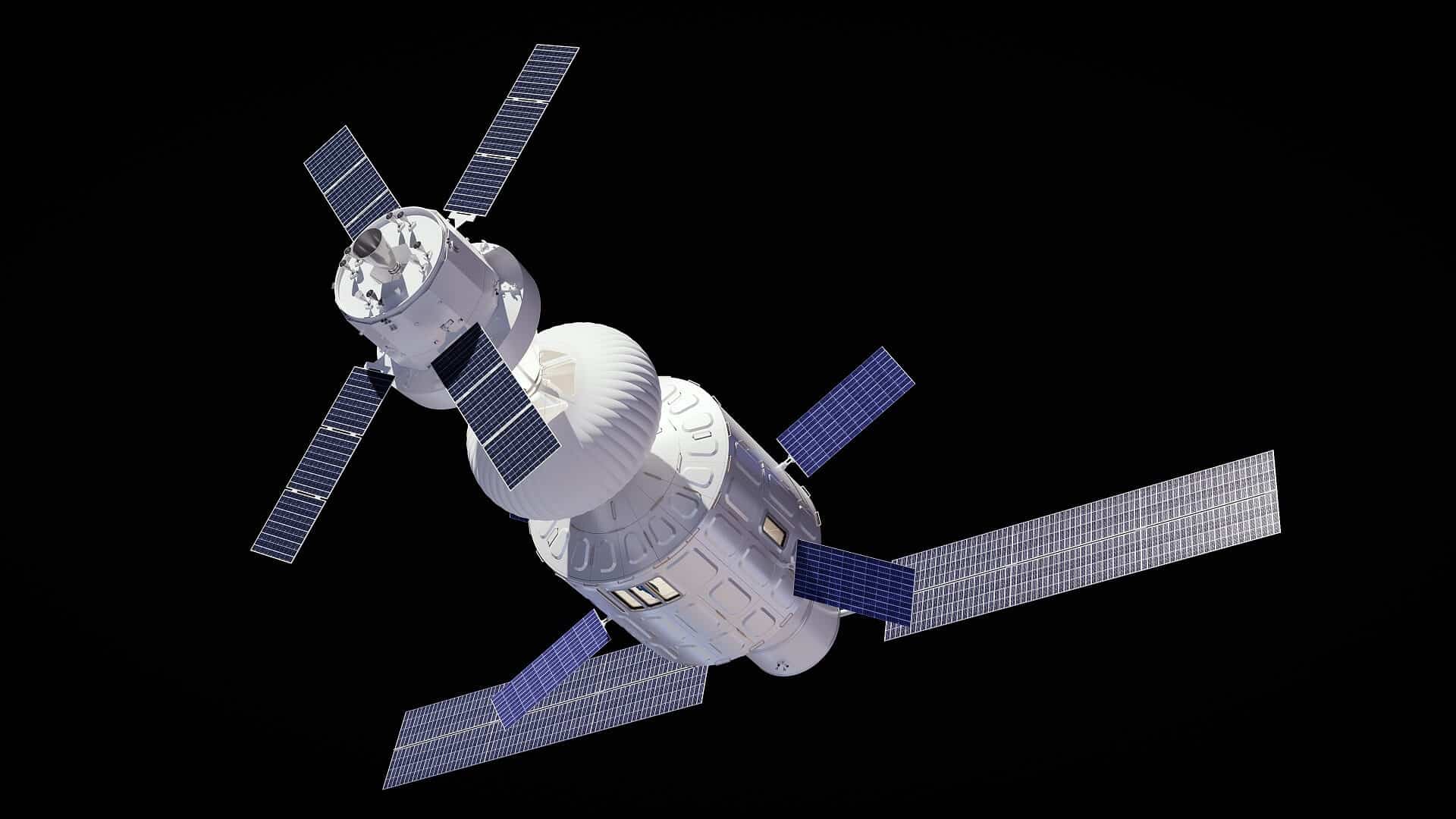Airbus offers a "multipurpose route module" known as the Airbus LOOP. The station includes three decks - and for the first time in the journeys of the human race outside the atmosphere and gravity of the Earth - also a centrifuge that will create gravity for the crew members but only in a small part of the module

The European aerospace concern Airbus has designed a futuristic concept for a space station, which includes components that have not yet been implemented in the current space stations and which will provide solutions to issues such as the health of the astronauts and the overall safety of the station. The Airbus LOOP space station could also be a do-it-yourself spacecraft for travel around the solar system.
The most prominent innovative/revolutionary element in the station is a centrifuge device that creates a simulated gravity in the station, which will allow minimizing physiological damage to the crew members, alongside preparing the body to stay in the celestial bodies on which they will land. The rigid outer shell of the station offers maximum protection against external influences and disasters from objects hitting the station.
We will remind you that the International Space Station ISS, which has been above the Earth since 2000, is approaching the end of its expected service around the year 2030 - an operational activity longer than the original planning of 15 years. Next to it is the Chinese space station Tiangong, and India's space research organization ISRO plans to launch and deploy its own space station during this decade.

Airbus offers a "multipurpose route module" known as Airbus LOOP. The station includes three decks - and for the first time in the journeys of the human race outside the atmosphere and gravity of the Earth - also a centrifuge that will create gravity for the crew members. The ISS does not have such measures, which could have prevented at least some of the physiological damage to those staying on the station.
Such damage as a result of prolonged stay in zero gravity, headed by the loss of bone density, will be sevenfold in prolonged journeys to planets and moons in the solar system. Staying in the pressure chambers will help mitigate the physiological effects of microgravity - while acclimating the crew to what they will experience on the surface - that is, upon reaching the celestial bodies. The Airbus LOOP will support both low-orbit missions above the Earth or the Moon, and long-range missions of billions of kilometers.
The station will allow the stay and activity of between 4-8 staff members. According to Airbus "this makes the station suitable for future space stations and long-term missions to the planets". The interior design consists of three decks. These include – from top to bottom – a living deck, a science deck and the gravity-simulating centrifuge for two crew members at a time. The visualization video prepared by Airbus gives the feeling that the futuristic station will allow an enjoyable stay in space.
The diameter of the module is eight meters with a similar length, and about 100 cubic meters of volume. According to Airbus, the separation into different decks allows for an "internal safe harbor concept", meaning that the crew can move to the deck that provides the most protection in the event of a solar flare or other hazards. This three-deck design meets the basic needs of a long-term stay in space and according to Airbus this makes the LOOP compatible with all crew and cargo vehicles currently in service and under development.

Each deck is accessible through a central "tunnel", where you can move in the same way as the astronauts on the ISS. The tunnel is surrounded by a greenhouse structure that can house plant experiments and provide a constant supply of supplemental vegetables, legumes and other plants, similar to the greenhouses on board the ISS. The station's modularity makes it possible to adapt the deck to the mission requirements, including using the mechanical structure alone in a "dry module".
The separate decks can be equipped with specific devices and infrastructure - depending on the mission requirements - and in the standard design the Habitation Deck is actually a common area with large windows and fitness equipment, the most prominent of which is of course stationary exercise bikes. The science deck will be equipped with computers, and of course it will have an airlock that allows the crew to carry out outdoor activities in space suits or space vehicles.
The innovative centrifuge consists of two weights and two "backpack" chambers for the crew. They contain exercise bikes and can accommodate a single crew member, allowing the crew to train (two at a time) in a simulated gravity environment.
At this stage, the centrifuge will be able to simulate the gravitational forces of the Earth, the Moon and Mars. The concern believes that this will be especially useful during missions to the planets, and will allow "the crew to acclimate to what they will experience on the surface."

Airbus says that it will be possible to combine several LOOP modules to create a complete space station, and a spacecraft for long-term space travel. The manufacturer stated that "The Airbus LOOP is designed to make a long-term stay in space comfortable and enjoyable for its inhabitants, while supporting efficient and sustainable activity at the same time. It is based on everything that has been learned over the decades and fully utilizes the potential of tomorrow's technologies."
Airbus, based in Toulouse, France, concludes that "this new module can become part of any infrastructure that will arrive after the ISS - whether they are commercial or institutional in nature." According to the European concern, the Airbus LOOP was designed to fit the next generation of super-heavy launchers that can launch an entire module into space in one piece.
More of the topic in Hayadan:
- NASA will attach a private inflatable space station model to the International Space Station
- Ax-1: Why the private mission to the International Space Station is a game changer, and details about the space station Axium is seeking to build
- Richard Branson beat Jeff Bezos in the space race * took off with 5 others to give way
- China has successfully launched the Tiangong 2 space station

5 תגובות
expert liar….
Why?
First the USA, soon China and then India - so now every country will have a space station?, and what next? Will every Tel Aviv technological high school that today raises satellites also have its own space station?
1969 - The "landing" on the moon, in a "spacecraft" forgot its computing is weaker than that of an average pocket computer in 2023.
1973 - 5 "landings" on the moon and endless talk of colonization on the moon, Mars, and stars outside the solar system.
2023 fifty years later
No manned landing on any body, NASA lost the Apollo construction plans, lost the telemetry data of the Apollo mission, lost the original high quality video footage, and all that remains is what was broadcast on 70s television in black and white and shocking resolution.
NASA does not even manage to bring photos of the vehicles it left on the moon, only blurry spots, while at the same time they bring photos of stars from distances of hundreds of millions of light years.
Does anyone really believe that the moon landing was real?
It surprises me that the author of the article supports the conspiracy that denies the landing on the moon.
Was the site manager aware of this?
https://www.drormarom.co.il/%d7%9c%d7%90-%d7%a0%d7%97%d7%aa%d7%a0%d7%95-%d7%a2%d7%9c-%d7%94%d7%99%d7%a8%d7%97/
Question: With such a small diameter, the angular velocity would have to be quite large. Assuming I'm standing on the outer side of the 'barrel', my legs move very fast relative to my head.
Is it not problematic?
"Revealing a concept" is simple. There are dozens of other concepts for spinning space stations that have been proposed and unveiled over the past few decades.
What is a little more complex is to make the commitment and the billions required to plan and realize it.